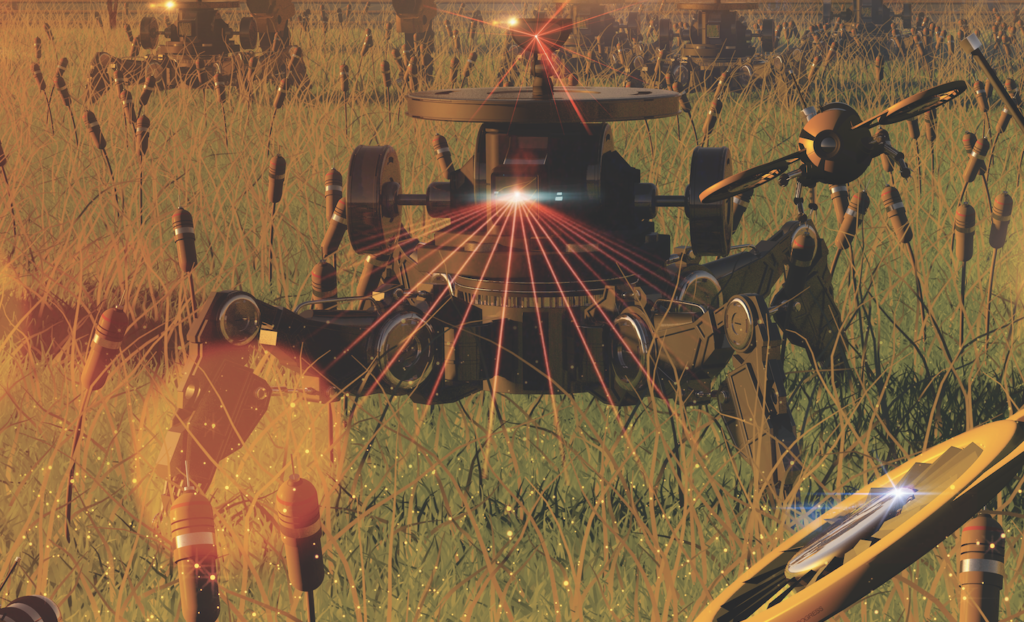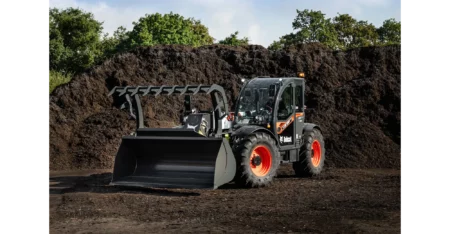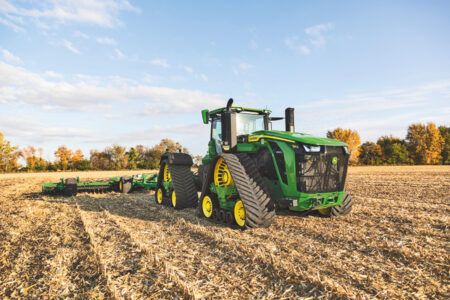It is estimated that agricultural robots and drones have the potential to become a US$35Bn industry by 2038. This is an exciting prospect and is likely to be feasible provided some technological and market developments take place.
In this article, Dr Khasha Ghaffarzadeh, research director at IDTechEx discuss some underpinning developments include autonomous mobility, deep learning, ruggedization of electronics and modularity, and energy source. All of these topics represent enormous innovation and product development opportunities.
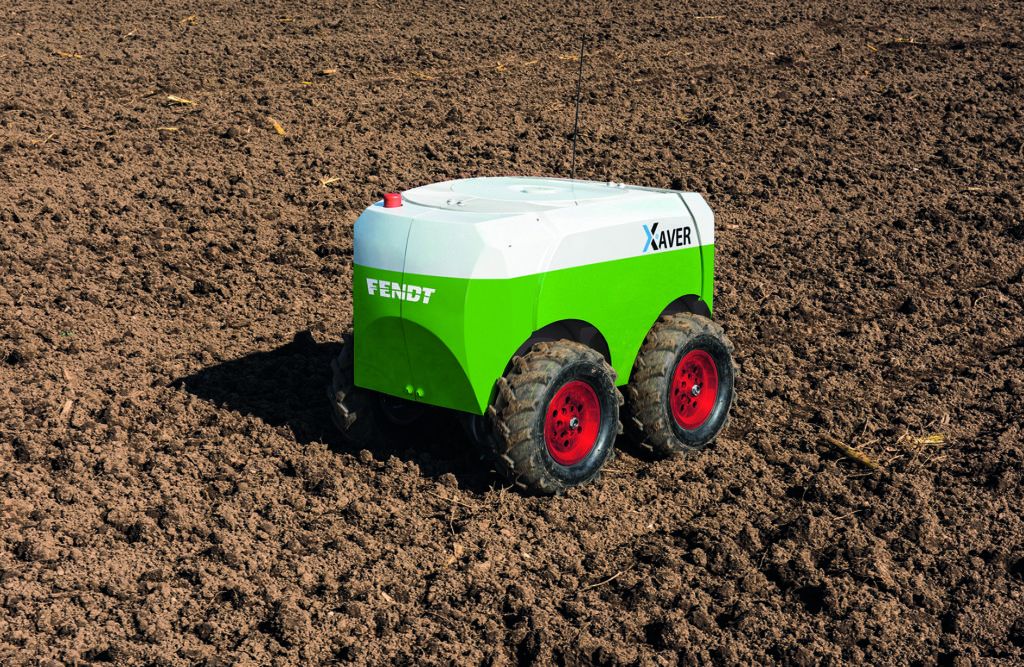 Autonomous mobility technology
Autonomous mobility technology
The basis of automation is to boost productivity or output per head. This goal has always motivated the evolution of agricultural machinery, and historical trends suggest that indeed agriculture has been very successful in boosting productivity although significant challenges remain.
It is this trend that has created large, heavy and fast vehicles that amplify the productivity of the driver. The next natural step to boost productivity further will be to remove the direct driver and to enable remote monitoring of large autonomous fleets of agricultural robots.
As a result of this trend, tractors can become ever more autonomous and/or large fleets of small autonomous robots can emerge. Indeed, an IDTechEx report forecasts that it is feasible that the market for small agrobots will reach 160 million units by 2028.
There are however many underpinning technology developments required to enable reaching milestones such as several hundred million agrobot sales. Given the often outdoor nature of agriculture, GPS (or RTK-GPS for more precision) is a necessity. This network already exits and the cost of implementation- be it the receiver, the set-up, or signal subscription- are all falling.
However, this alone is not enough. Indeed, as is the case in autonomous cars, autonomous agricultural robots too will require a fusion of sensors. This is because of the necessity to avoid clash or to maintain operation when GPS signals fails even in the dark. A key underpinning requirement, therefore, is the development of low-cost and rugged sensors such as radars, lidars, ultrasound, and infrared night vision.
The market for agricultural robotics itself is too small to pull these developments. It will however benefit from the global trends towards autonomous cars. The same can be said for the software aspect of autonomous navigation: here too learnings from other sectors can be transferred to agriculture.
The autonomous mobility is therefore a major trend that will transform agricultural machinery. With this trend comes tremendous innovation and product development opportunities. Indeed, this technology can dramatically alter the way we view agricultural machinery, replacing big and heavy vehicles with fleets of small and slow autonomous ones.
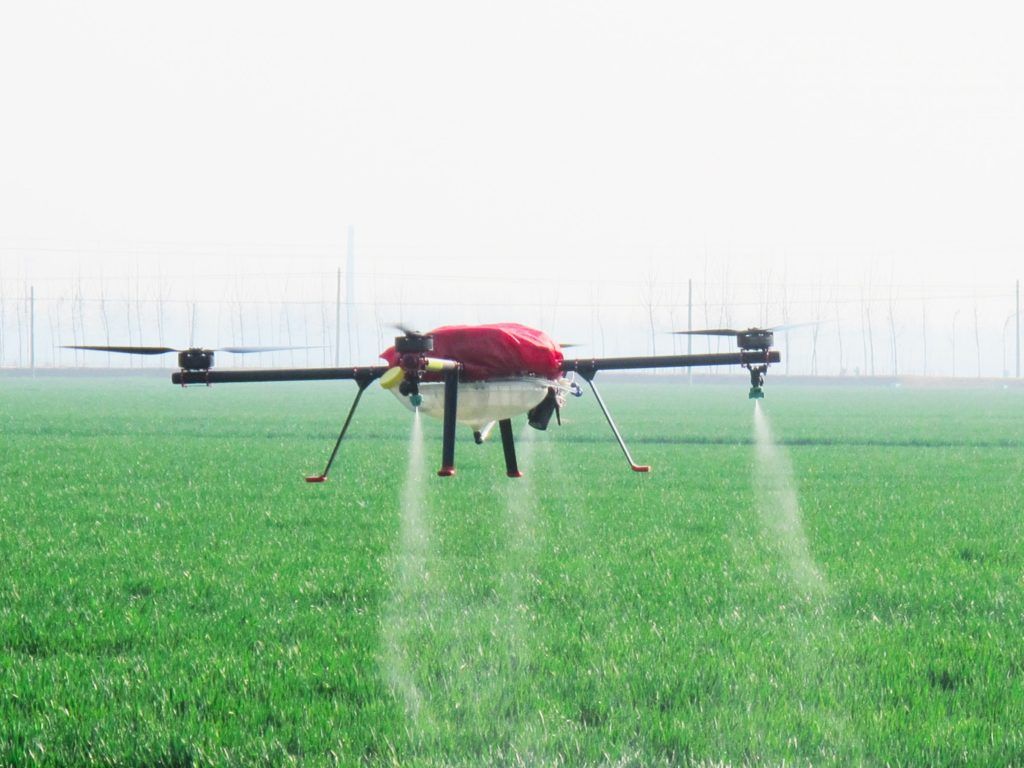 Deep learning
Deep learning
We hear of deep learning often these days. It is proclaimed as a panacea, but it is essential for further development of agricultural robots. There are several examples that can illustrate why.
First, consider precision weeding. Here, the machine needs to see, identify and locate weeds in distinction to crops. This is not an easy task and would not lend itself to traditional deterministic software development. This is easily appreciated since one can imagine in the live environment of a farm there are many weeds and crops at different growth stages under different lighting and terrain conditions and so on.
It has however been possible to take significant steps forward with deep learning. Here, algorithms have been trained on labelled datasets and/or via trail-and-error to distinguish weeds from crops. Importantly, the accuracy requirements are not too stringent since errors are not fatal. This alleviates the need for enormous data sets as compared to safety-critical applications such as autonomous passenger cars.
There is of course more work to do. In time, the algorithm will need to be able to deal with a greater variety of conditions (e.g., different weeds, crops, weathers, etc) and to take a more diverse range of actions. It is however already an important demonstrated step towards further digitization of agriculture.
Take fresh fruit picking as the second example. This too is a complex task that does not lend itself to traditional programming. To appreciate this just imagine how to find and reach a fruit placed inside a complex and changing tree canopy.
Here too deep learning can come to our aide. The challenge here also is generating the data set on which to train the algorithm. This is an ongoing direction of research and breakthroughs will appear before long. In general, robotic fresh fruit picking is at an early stage of development but there is good progress especially in more controlled environments.
Therefore, in general deep learning will have a role to play in agricultural automation too. It will help solve specific and narrow software problems that evade traditional programming approaches, thus opening more tasks to automation.
This therefore is another significant innovation opportunity. The use of data will become increasingly important in agriculture. This opens the industry to new types of players including data analytic and management firms, data acquisition tool makers, precision equipment suppliers and so on. It will also enable new business models hitherto uncommon in agriculture.
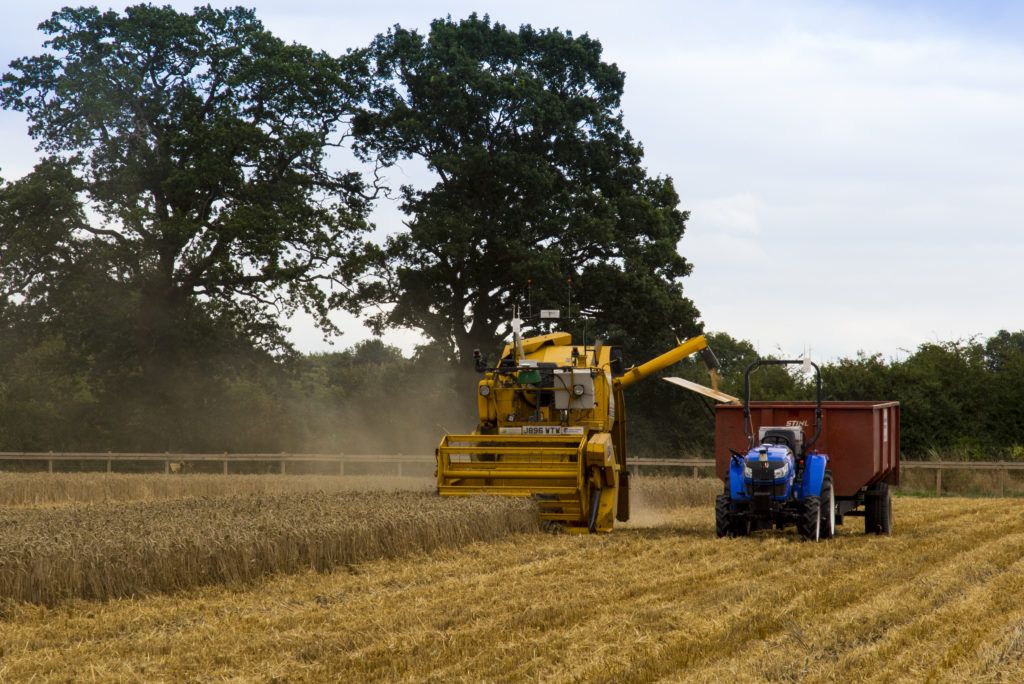 Ruggedization of electronics and modularity
Ruggedization of electronics and modularity
The agricultural environment is not kind on machines. This is due to the terrain and weather. As such, machines and all their onboard electronics will experience more challenging conditions. For example, they will be subjected to high vibration, to rain, to sun exposure, etc.
Again, the developments in the automotive industry will help, but only partly. They help because of the rise of electronic content per vehicle. This trend is creating reliability challenges, particularly regarding thermal stability and power handling capability, that PCB makers and IC packagers are having to meet. The environment however is not identical and therefore further customization and ruggedization specifically for the agricultural environment will be needed.
This ruggedization is being done internally by developers at this stage. This is because the value chain is not yet in place with major OEMs supplying the right parts or compartments. This slows down development in early stages however it is an issue that will be resolved when industry sales pick up.
This trend therefore represents an opportunity for electronic part and component manufactures to develop custom solutions aimed at the agricultural sector.
Another related requirement is to enable modularity. It is likely that there will be mass-produced autonomous platforms or bases in the future to drive down cost and to promote universality. These bases would then be customized at or near the point of use by inserting the appropriate functional module, e.g., weeding, data-scouting, fertilizer applicator, etc. This will require further evolution and maturation of the still nascent value chain.
This trend means that there will be a major fight in the medium term for becoming the dominant platform for agricultural robots. The dynamics of the business battle, however, will be different from that which we are likely to find in autonomous mobile robots in other sectors. First, here the robots will be working outdoors therefore they require different drive and endurance capabilities. Second, agriculture is diverse therefore there is room for some fragmentation of design. Furthermore, the optimal design is still far from established. It is only through many seasons of trial-and-error that the best designs will emerge in terms of size, driver power, energy source, price, integrated functionalities and so on.
This trend will also represent opportunity for functional module makers. In the early phases of the industry developments, the modules are likely to be custom built in collaboration with the specific agricultural robot/drone company. In the future, there is however a strong possibility that plug-and-play functional modules compatible with standard autonomous base designs will emerge.
Boosting uptime
Robots and drones must offer some type of productivity and/or cost advantage. Achieving this will require that the machines work longer hours with little downtime day or night. This, of course, depends on energy sources giving long uptimes and being easy to replenish. This, in our view, will lead to very interesting dynamics in product designs.
 Today many have chosen to use batteries to electrically propel their robots. This has certain size advantages and also enables driving the four vehicles separately, giving better manoeuvrability to the robots in confined and/or slippery conditions.
Today many have chosen to use batteries to electrically propel their robots. This has certain size advantages and also enables driving the four vehicles separately, giving better manoeuvrability to the robots in confined and/or slippery conditions.
This design however is not without its challenges: the charging-up time can be long, thus increasing robot downtime; it likely requires fleet management software so that robots automatically manage themselves and self-charge when needed; it requires the availability of charging infrastructure which can be an issue in larger fields; and so on.
The opposite approach is to use an internal combustion engine. This would be easier to use in farms given current practises and will probably give a higher uptime per unit. However, fully automated fleet management will be challenging since robots will not be able to self-refuel easily. The robot sizes are also likely to be larger, the components including precision imager, sprayers and actuators will experience more vibration, independent control of each wheel be more difficult, and so on.
These technology options, including many hybrid ones, will lead to interesting dynamics in the design of agricultural robots.


